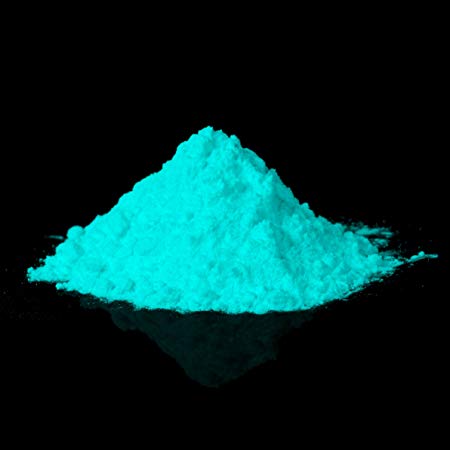Description
Our "Glow in the Dark" pigments are approved for infrequent cosmetics use. Not all glow pigments activate well and light up. We have chosen 2 so far that activate best. To activate them, expose them to light.
Please note: Image above is a representation of the colour as it glows in the dark, actual pigment is an off-white colour
There is only one ingredient that is approved for use in glow pigments for makeup. The color additive luminescent zinc sulfide is zinc sulfide containing a copper activator (copper chloride). The FDA has stringent standards as to how much copper chloride can be in the powder. Glow in the dark zinc sulfide is generally at least 99.8% Zinc Sulfide and less than 0.02% Copper Chloride. It is the copper activator that make the zinc sulfide glow!
Per the US FDA:
c) Uses and restrictions. The color additive luminescent zinc sulfide may be safely used for coloring externally applied facial makeup preparations and nail polish included under 720.4(c)(7)(ix) and (c)(8)(v) of this chapter, respectively, to the following restrictions:
(1) The amount of luminescent zinc sulfide in facial makeup preparations shall not exceed 10 percent by weight of the final product.
(2) Facial makeup preparations containing luminescent zinc sulfide are intended for use only on limited, infrequent occasions, e.g., Halloween, and not for regular or daily use.
(d) Labeling requirements. (1) The label of the color additive and any mixtures prepared therefrom shall bear expiration dates for the sealed and open container (established through generally accepted stability testing methods), other information required by 70.25 of this chapter, and adequate directions to prepare a final product complying with the limitations prescribed in paragraph (c) of this section.
(2) The label of a facial makeup preparation containing the color additive shall bear, in addition to other information required by the law, the following statement conspicuously displayed:
Do not use in the area of the eye.
(e) Exemption from certification. Certification of this color additive is not necessary for the protection of the public health, and therefore batches thereof are exempt from the certification requirements of section 721(c) of the act.







